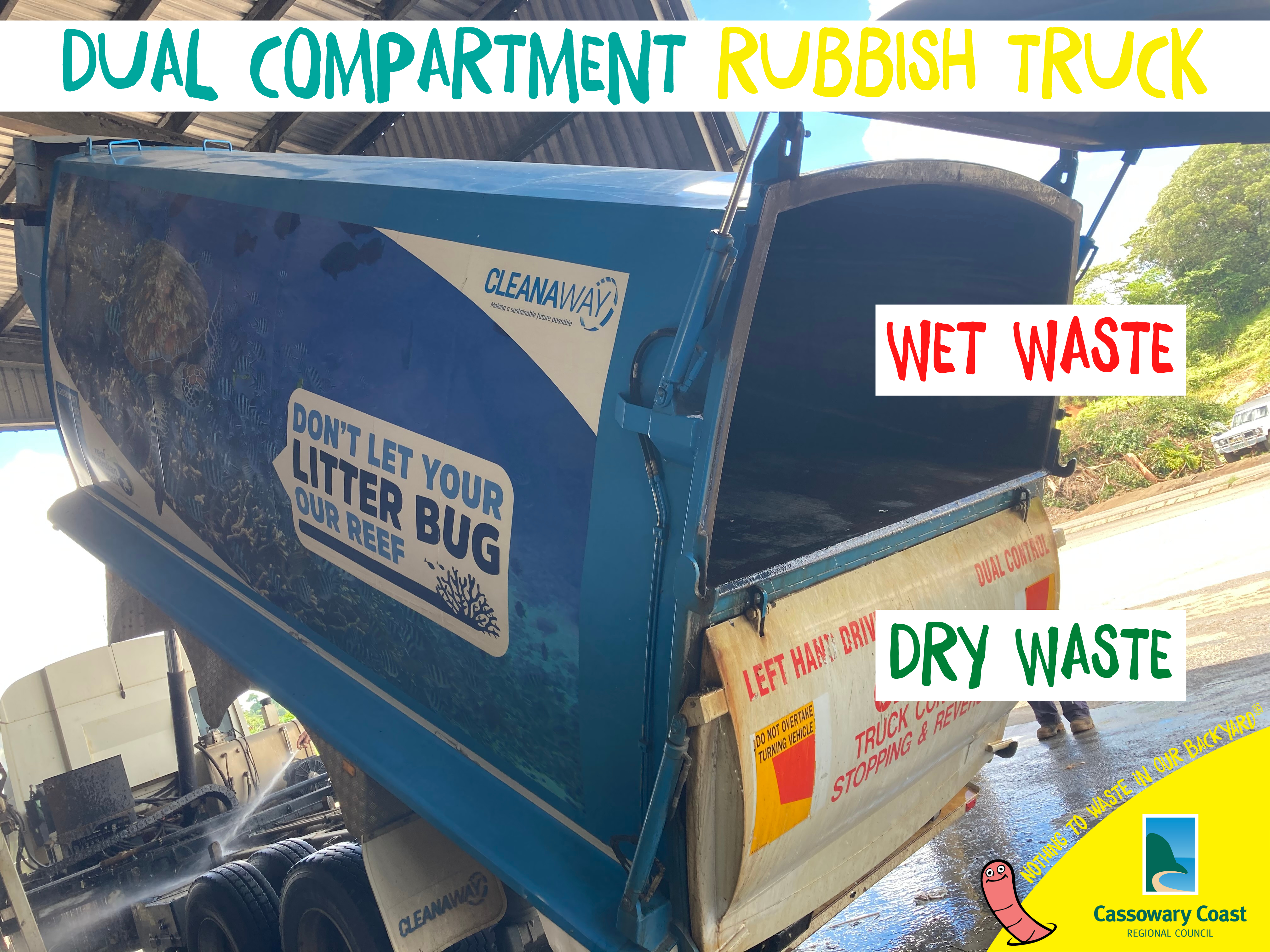Wet & Dry Waste
Living in the Wet Tropics means we experience one of the highest average annual rainfalls in Australia. Because of this, all our putrescible (wet) waste has to go to a landfill site outside the region. This is a condition of our landfill licenses, issued by the QLD State Government to protect surface water and groundwater from the decomposed contaminants (leachate) produced from wet waste. This is unique to our region and the reason why we must sort our waste into WET and DRY.
All of our WET waste is transported 160km to the Springmount landfill near Mareeba Landfill.
All of our DRY waste is buried in either Tully or Stoters landfill.
If you separate your waste correctly into "wet" and "dry", it reduces the amount of waste that has to be transported to the Springmount landfill, in turn reducing our transportation and disposal costs. If wet waste is placed in the dry waste bin the whole bin of waste becomes "wet" waste and has to go to the Springmount landfill, thereby increasing cost. To help reduce costs, learn what waste products goes into the wet and dry bins.
-
Sort it, Compost it or Bin it
Wet waste refers to material containing putrescibles that decompose and produces a liquid known as leachate (waste juice). The following items are wet waste and must be disposed of in the blue/red lid kerbside bins:
- Food scraps
- Aerosol cans
- Unrinsed food and drink containers
- Dirty or smelly plastic bags
- Used disposable nappies and other sanitary products.
- Small quantities of garden waste (please try composting instead or recycle it at Waste Transfer Station, click here to find out more)
All WET waste is transported to Springmount landfill which comes at a cost to Council and subsequently rate payers. Help us reduce cost and protect our beautiful backyard by separating your wet and dry waste, composting your food scraps and recycling green waste at our Transfer Stations.
Resources:
-
Sort It, Clean It, Bin It
Dry waste is your clean, uncontaminated waste that when decomposed produces minimal amount of waste juice. The following items are examples of dry waste that belong in the green lid kerbside bins:
- Rinsed and clean food and drink containers
- Clean plastics
- Paper and cardboard
- Wood and cork
- Glass (all types)
- Small metal items
- Fabric (clothing, shoes etc)
- Clean packaging material
Did you know that you can recycle more than 20 Dry waste items. Click here to find out which ones you can recycle.
Recycling Programs
Tips on how to reduce wasteResources:
Dual Body Rubbish Collection Trucks
Kerbside side rubbish collection trucks have a spilt body compartment. This ensures that waste collected from wet and dry kerbside rubbish bins remain separated inside the truck.

Click on the links below to find out more about Waste Managment:
-
Community Composting Program
Read More -
Domestic Waste Collection Services
Read More -
Household Hazardous Waste
Read More -
Illegal Dumping
Read More -
A – Z Waste Disposal Guide
Read More -
Recycling Programs
Read More -
Tips for Reducing Waste
Read More -
Waste Levy and Strategies
Read More -
Waste Transfer Stations
Read More -
Wet and Dry Waste
Read More
